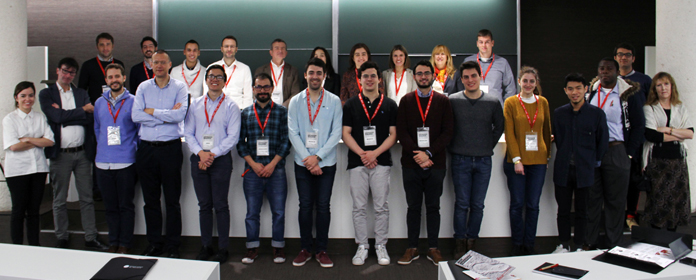Provide reliable information to potential migrants financial aid to modify their decision to migrate to Europe.
Migrants overestimate the chances of getting a visa, but also the chances of dying on the journey and still one in two prefers to risk their lives in the Mediterranean Sea.

Imagine you are a potential migrant from Gambia who is given 2,000 euros. You can keep that money or use it to migrate to Italy where you will reside for the next 10 years. But first you should know that two out of ten die on the way and only three out of ten obtain legal status. In addition, your salary will depend on your status, if you are legalized you will receive a thousand euros, but if not, half of it. Knowing the data, would you be willing to migrate? How much would you be willing to pay to reach Italy? And, above all, what monthly salary would you require to stay in your country?
These questions were asked to 400 young people between 15 and 25 years old in Gambia by a team of researchers including Catia Batista, co-founder of research center Novafrica in Lisbon. "They thought that the chance of dying was one in two and yet half of them were willing to emigrate", said the researcher at the framework of the workshop on migration organized last November 11 in Pamplona by the Navarra Center for International Development, research center of the Institute for Culture and Society of the University of Navarra.
The event brought together economic researchers to analyze the phenomenon of migration. Since 2015 more than three million migrants have arrived in Europe crossing the Mediterranean Sea and in total migrants represent 3.5% of the world's population. Understanding the causes that foster the movement of people between countries, the difficulties to settle and their integration once at destination are some of the needs to implement effective policies.
In this sense, Batista's research aimed to find out whether informing those willing to migrate about the uncertain journey and possible future at destination with concrete data can alter a potential migrant's decision. The results showed that migrants not only overestimate the fatalities but also believe that there is a higher chance of getting a visa at destination, as they believe that half get a permit from residency program. This has an effect on migrants: by expecting fewer fatalities there is 2.29% more interest in migrating, but knowing the data of obtaining a legal status at the destination produces the opposite effect, lowering by 2.88% the probability of trying to reach Europe.
"Offering contrasted information financial aid to modify the decision to migrate irregularly, although the results can be surprising," said Batista, and affirmed that they did not expect half of them to want to risk their lives in a trip where they thought that the options of living or dying were even. "One of the lessons is that sometimes what we think does not necessarily translate into reality," the researcher concluded.
Causes, routes and expenseBlanca Moreno-Dodson, director of the Center for Mediterranean Integration, a World Bank affiliated organization, outlined the three main legs that make migration possible: macroeconomic causes, which focus on a country's socioeconomic and political status ; microeconomic causes, which address personal ambitions and situations, more related to the local environment; and mesoeconomic causes, which deal with laws and regulations on mobility.
The event also discussed the different migratory routes taken by African migrants trying to reach Europe. Mariapia Mendola, associate professor of Economics at the department of Economics of the Università di Milano-Bicocca, assured that the fall of Muammar Gaddafi's regime in Libya in 2011 made the country a place of passage to the other side of the sea instead of an immigration destination. "People fix the refugee crisis in 2015 in Europe, but the beginning is in Italy in 2011, with a very relevant peak," Mendola assured.
In her study, the Italian researcher calculates the lowest cost route by encompassing all possible variables between origin and destination countries before and after the reopening of the central Mediterranean route in 2011. "In that sense, for example, the lowest cost route between Sudan and Switzerland in 2010 went eastward and in 2012 it went through Central Africa." From average the cost just to cross the sea by boat, the last leg of a long journey, typically ranges from $1,000 to $1,500, although demand is highly elastic.
Once at destination, migrants do not behave in the same way as natives in economic matters. Many migrants emigrate in search of a better future for their families, which leads to different consumption behaviors, as they send 10% of their salary from average in remittances and do not spend as much in their new country, also reducing the expense on housing compared to the native population by 2 to 5%. In addition, the arrival of migrants also observes a patron saint in terms of location."Migrants are concentrated in expensive and high-wage cities," said Christoph Albert, researcher postdoctoral fellow at the Center for Monetary and Financial programs of study . This contributes to income disparity and increases the cost of living between cities, but increases the productivity and welfare of local workers by moving economic activity from places with leave productivity to those with high productivity.
